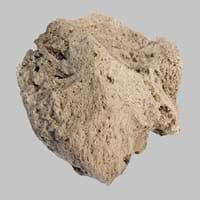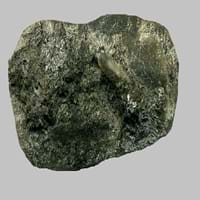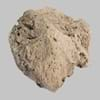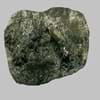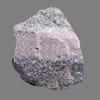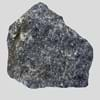Definition
Pumice is a volcanic rock that consists of highly vesicular rough textured volcanic glass, which may or may not contain crystals
Kenyte is a variety of porphyritic phonolite or trachyte rock with rhomb shaped phenocrysts of anorthoclase with variable olivine and augite in a glassy matrix
Discoverer
Unknown
J. W. Gregory
Etymology
From Old French pomis, from a Latin dialect variant of pumex
From the mountain ranges- Mount Kenya and is named by J. W. Gregory in 1900
Class
Igneous Rocks
Igneous Rocks
Sub-Class
Durable Rock, Medium Hardness Rock
Durable Rock, Medium Hardness Rock
Group
Volcanic
Not Applicable
Other Categories
Fine Grained Rock, Opaque Rock
Fine Grained Rock, Opaque Rock
Texture
Vesicular
Glassy, Granular
Color
Beige, Colourless, Grey, Light Green, Light Grey, Pink, White, Yellow- grey
Brown, Buff, Cream, Green, Grey, Pink, White
Durability
Durable
Durable
Scratch Resistant
Yes
Yes
Appearance
Vesicular
Banded and Foilated
Interior Uses
Decorative Aggregates, Flooring, Homes, Interior Decoration
Decorative Aggregates, Entryways, Homes, Interior Decoration, Kitchens
Exterior Uses
As Building Stone, As Facing Stone, Garden Decoration, Paving Stone
As Building Stone, Garden Decoration, Paving Stone
Other Architectural Uses
Curbing, Powder
Curbing
Construction Industry
As Dimension Stone, Cement Manufacture, for Road Aggregate, In landscaping and horticulture, Making natural cement, Production of lightweight concrete blocks
As Dimension Stone, Cement Manufacture, Construction Aggregate, for Road Aggregate, Landscaping, Making natural cement, Manufacture of Magnesium and Dolomite Refractories, Production of Glass and Ceramics
Medical Industry
As an abrasive in skin exfoliating products, In Chemical and Pharmaceutical Industry, Medicines and Cosmetics
Not Yet Used
Antiquity Uses
Artifacts
Artifacts, Monuments, Sculpture
Commercial Uses
As a traction material on snow-covered roads, As an abrasive in pencil erasers, Fine abrasive used for polishing, Manufacture of Soap, Solvents, Dyes, Plastics and Fibres, Used in aquariums
Cemetery Markers, Creating Artwork
Types
Scoria
Not Available
Features
Host Rock for Lead
Application of acids on the surface causes cloudy frosting, Available in Lots of Colors and Patterns, Dissolves in hydrochloric acid, Is one of the oldest rock
Archaeological Significance
Monuments
Not Yet Used
Used
Famous Monuments
Not Applicable
Data Not Available
Sculpture
Not Yet Used
Used
Famous Sculptures
Not Applicable
Data Not Available
Figurines
Not Yet Used
Used
Formation
Pumice rock forms when the magma cools so quickly that atoms in the melt are not able to arrange themselves into a crystalline structure.
Kenyte is a fine-grained, hard rock which is a type of metasomatite, essentially altered basalt. It forms with or without crystallization, either below the surface as intrusive rocks or on the surface as extrusive rocks.
Mineral Content
Aluminum Oxides, Calcite, Carbonate, Iron Oxides, Silica
Albite, Amphibole, Biotite, Cancrinite, Feldspar, Hornblende, Plagioclase, Pyroxene, Sodalite
Compound Content
Al, Aluminium Oxide, CaO, Carbon Dioxide, MgO, Silicon Dioxide
Aluminium Oxide, CaO, Iron(III) Oxide, FeO, Potassium Oxide, MgO, MnO, Sodium Oxide, Phosphorus Pentoxide, Silicon Dioxide, Titanium Dioxide
Types of Metamorphism
Burial Metamorphism, Impact Metamorphism
Burial Metamorphism, Cataclastic Metamorphism, Impact Metamorphism
Types of Weathering
Biological Weathering, Chemical Weathering, Mechanical Weathering
Biological Weathering
Types of Erosion
Chemical Erosion, Coastal Erosion, Glacier Erosion, Sea Erosion, Water Erosion, Wind Erosion
Chemical Erosion, Coastal Erosion
Grain Size
Fine Grained
Fine Grained
Fracture
Planar
Conchoidal to Uneven
Streak
White, Greenish White or Grey
White, Greenish White or Grey
Porosity
Highly Porous
Highly Porous
Luster
Earthy
Greasy to Dull
Toughness
3
Not Available
Specific Gravity
2.86
2.6
Transparency
Opaque
Translucent to Opaque
Density
0.25-0.3 g/cm3
2.6 g/cm3
Specific Heat Capacity
Not Available
Resistance
Impact Resistant, Pressure Resistant
Heat Resistant, Impact Resistant, Wear Resistant
Deposits in Eastern Continents
Asia
Afghanistan, Indonesia, Japan, Russia
Indonesia, Iran, Russia, Saudi Arabia, Sri Lanka, Taiwan, Thailand, Turkey, Turkmenistan, Vietnam
Africa
Ethiopia, Kenya, Tanzania
Angola, Egypt, Madagascar, Namibia, Nigeria, South Africa
Europe
Greece, Hungary, Iceland, Italy, Turkey
Andorra, Finland, France, Germany, Great Britain, Italy, Norway, Portugal, Spain, Sweden
Others
Not Yet Found
Greenland
Deposits in Western Continents
North America
Bahamas, Barbados, Canada, Costa Rica, Cuba, Jamaica, Mexico, USA
Canada, USA
South America
Argentina, Chile, Ecuador, Peru
Brazil, Chile, Colombia, Uruguay, Venezuela
Deposits in Oceania Continent
Australia
New Zealand, Western Australia
New Zealand, Queensland, South Australia, Tasmania, Western Australia
Pumice vs Kenyte Characteristics
Though some rocks look identical, they have certain characteristics which distinguish them from others. Characteristics of rocks include texture, appearance, color, fracture, streak, hardness etc. Pumice vs Kenyte characteristics assist us to distinguish and recognize rocks. Also you can check about Properties of Pumice and Properties of Kenyte. Learn more about Pumice vs Kenyte in the next section. The interior uses of Pumice include Decorative aggregates, Flooring, Homes and Interior decoration whereas the interior uses of Kenyte include Decorative aggregates, Entryways, Homes, Interior decoration and Kitchens. Due to some exceptional properties of Pumice and Kenyte, they have various applications in construction industry. The uses of Pumice in construction industry include As dimension stone, Cement manufacture, For road aggregate, In landscaping and horticulture, Making natural cement, Production of lightweight concrete blocks and that of Kenyte include As dimension stone, Cement manufacture, Construction aggregate, For road aggregate, Landscaping, Making natural cement, Manufacture of magnesium and dolomite refractories, Production of glass and ceramics.
More about Pumice and Kenyte
Here you can know more about Pumice and Kenyte. The life cycle of a rock consists of formation of rock, composition of rock and transformation of rock. The composition of Pumice and Kenyte consists of mineral content and compound content. The mineral content of Pumice includes Aluminum Oxides, Calcite, Carbonate, Iron Oxides, Silica and mineral content of Kenyte includes Albite, Amphibole, Biotite, Cancrinite, Feldspar, Hornblende, Plagioclase, Pyroxene, Sodalite. You can also check out the list of all Igneous Rocks. When we have to compare Pumice vs Kenyte, the texture, color and appearance plays an important role in determining the type of rock. Pumice is available in beige, colourless, grey, light green, light grey, pink, white, yellow- grey colors whereas, Kenyte is available in brown, buff, cream, green, grey, pink, white colors. Appearance of Pumice is Vesicular and that of Kenyte is Banded and Foilated. Properties of rock is another aspect for Pumice vs Kenyte. The hardness of Pumice is 6 and that of Kenyte is 5.5-6. The types of Pumice are Scoria whereas types of Kenyte are Not Available. Streak of rock is the color of powder produced when it is dragged across an unweathered surface. The streak of Pumice and Kenyte is white, greenish white or grey. The specific heat capacity of Pumice is 0.87 kJ/Kg K and that of Kenyte is Not Available. Depending on the properties like hardness, toughness, specific heat capacity, porosity etc., rocks are resistant to heat, wear, impact, etc.Pumice is impact resistant, pressure resistant whereas Kenyte is heat resistant, impact resistant, wear resistant.
